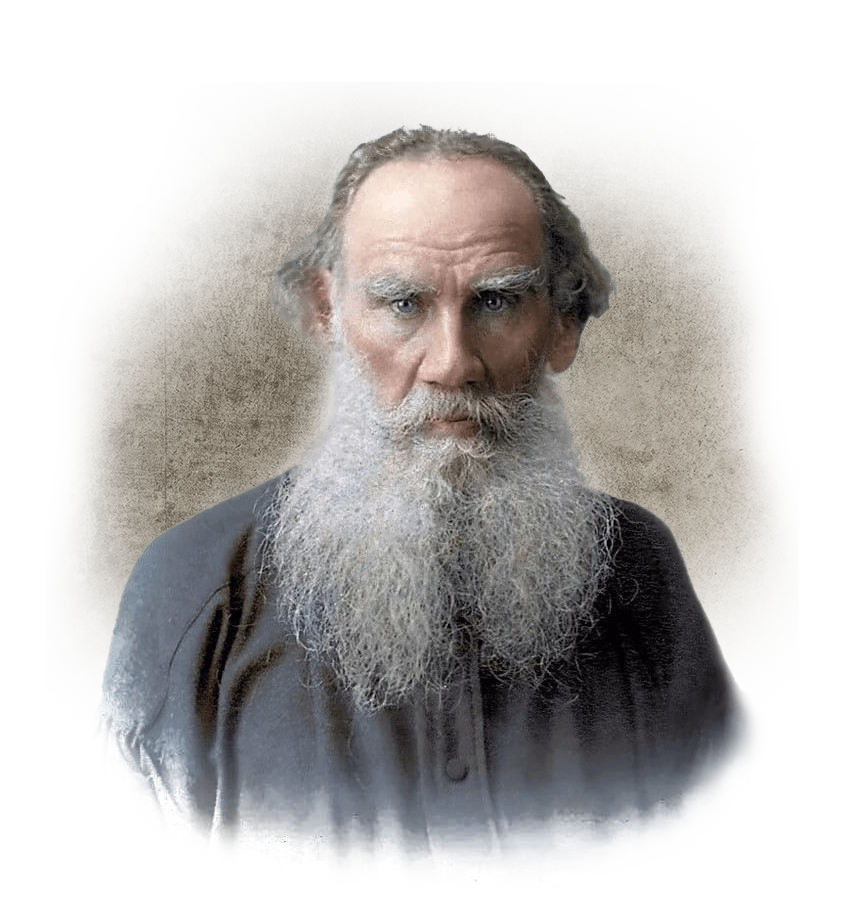
20.12.2022
“Hajji Murat is the story of an Avar field commander who goes over to the side of the Russians during the Caucasian War. With their help he expects to rescue his family, captured by Imam Shamil, but he soon becomes a prisoner of the imperial administration, decides to escape and dies in a shoot-out. “Khadzhi-Murat” is one of Tolstoy’s last works, the writer’s concluding statement on personal freedom and what suppresses it. It is a ruthless characterization of Russian colonial policy that relies on documented facts. It is also a triumph of the artistic method which allows the author to describe, with equal depth, military clashes and secular encounters, soldiers and leaders, Russians and Highlanders, life and death.
When was it written?
From August 10, 1896 – when Tolstoy began writing the “Caucasian story” called “Repay” – to December 19, 1904, when he made the last changes in XXIII chapter of the book, which was now called “Khadzhi-Murat”.
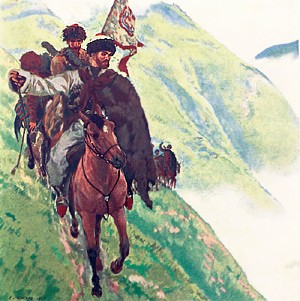
Work on the story progressed with great difficulty; for three years – from 1899 to 1901 – Tolstoy did not touch the text at all. This was mainly because at that time the writer was busy with the novel Resurrection (1899), the drama The Living Corpse (1900) and journalism. Another reason was the increasing complexity of the original idea: the story of Hadji Murat’s escape and death involved important historical figures – Shamil and Nicholas I – and this required additional research.
Tolstoj regularly mentions the book in his diaries: elation (“I wrote two chapters very well”) is replaced by disappointment in himself (“Worked badly. I got upset again”), pleasure from the return to fiction (“When I finished, I wanted to continue my artistic work”) – by shame for the time and effort spent (“It is a shame to write trifles”). The writer first tried to quit “Hadji Murat” altogether, then returned to it, polishing off various fragments: thus, the first thirteen chapters of the book were rewritten five times, and the fifteenth chapter, devoted to Nicholas I, eight times. “Hadji Murat” turned out to be Tolstoy’s most harrowing text – and the most secret: he did not part with the manuscript until October 28, 1910, his last day in Yasnaya Polyana.
How is it written?
Like War and Peace, Hadji Murat is a stereoscopic portrayal of real military conflict: the confrontation between the Russian Empire and the North Caucasian Imamate is described from different perspectives – through the eyes of soldiers and generals, men and women, from St Petersburg and from the front lines. Tolstoy gets inside the heads of decision-makers and discovers behind their momentous actions the emotional underside – the struggle between manifest desires and hidden fears, the clash of the rational and the subconscious.
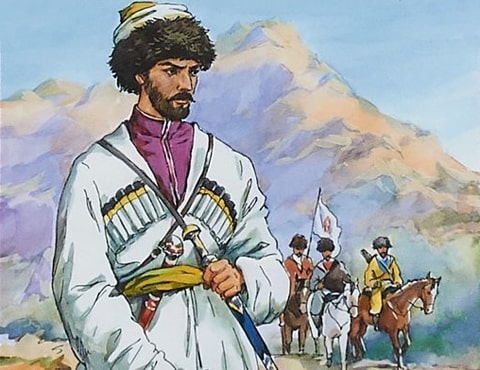
Like Resurrection, Khadzhi-Murat is an example of a fundamental, detracting critique of state institutions. Tolstoy not only tells the hero’s story but also exposes commonplaces about power and justice, demonstrating the everyday brutality of the apparatus of violence. One consequence of this strain of extreme candour is the extremely naturalistic and unprecedented for Russian classical literature description of the murder of Hadji Murat.
Literary scholar Vladimir Tunimanov has described Hadji Murat and Tolstoy’s earlier novel The Cossacks as a “Caucasian ‘rhyme'” that connects different stages in the writer’s life. In both cases, the author works with the regional context with the thoroughness of an ethnographer and the ardour of a publicist: he examines the structure of Caucasian culture at different levels and charts the conflict between civilisation (the metropolis) and nature (the unruly outskirts).
What influenced it?
The 1890s marks Tolstoy’s full-fledged return to literature, as if on new foundations: after a long break he is again in need of an extended artistic statement that would allow him to present his ideas in a popular form. In this sense, we can say that ‘Hadji Murat’ anticipated other works written by Tolstoy in this decade – from ‘The Fruit of the Enlightenment’ (1890) and ‘The Devil’ (1890) to ‘Dream of the Young Tsar’ (1894) and ‘The Master and the Worker’ (1895).
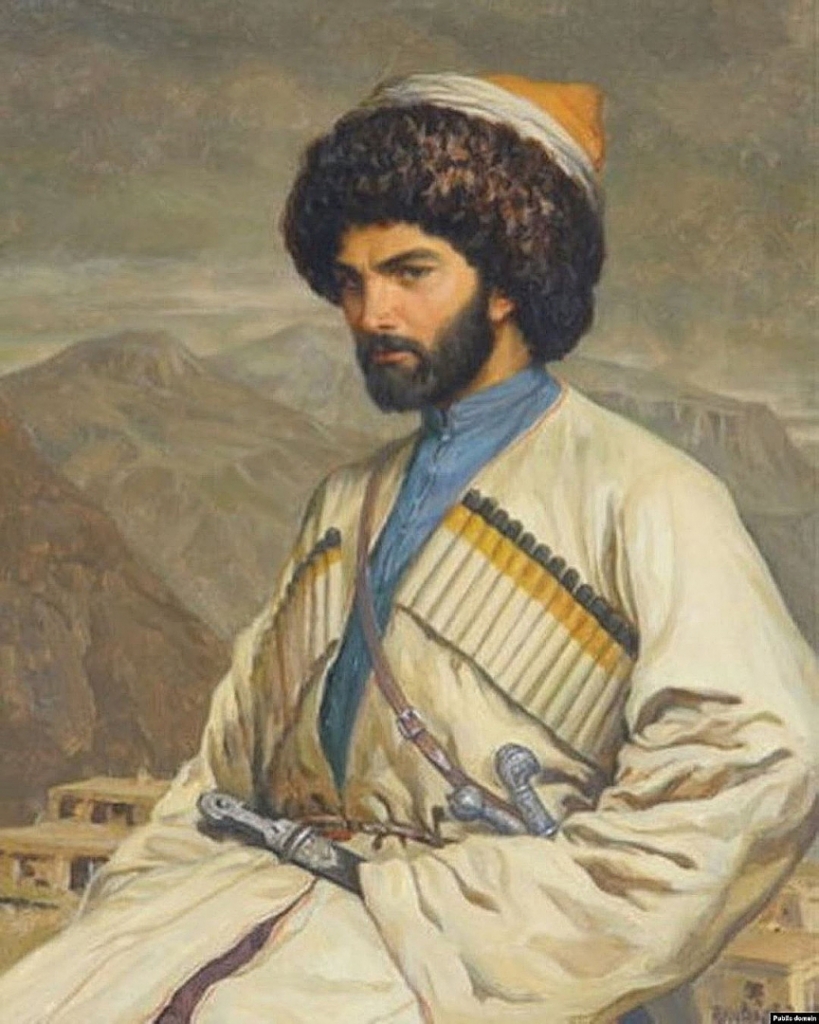
The subject of the story is definitely related to the twists and turns of Tolstoy’s biography. February 21, 1895 he told his wife about the desire to leave home: they had a quarrel because the writer gave the “master and employee” in the “Northern Gazette”, depriving the family income from the work. Two days later, their last – and particularly beloved – child, six-year-old Vanya, died. Tolstoy wrote in his diary: “For the first time in my life I feel hopelessness. The two motives – leaving the family and anxiety for the children – merged in the letter the writer wanted to leave for Sophia Andreevna in June 1897, and in ‘Hadji Murat’.
Finally, Tolstoy did a tremendous amount of research. “When I write the historical, I like to be faithful to reality to the smallest detail,” he told Ivan Korganov, who had seen Hadji Murat as a child and shared his memories with the author. Following this principle, the writer has mastered a vast – at least 172 works – range of sources. To name the most important: multi-volume “Collection of information about the mountaineers of the Caucasus”, “Twenty-five years in the Caucasus” by Arnold Zisserman, “Memoirs” by Vladimir Poltoratsky, “Captivity of Shamil” by Evgraf Verderevsky, “Emperor Nicholas I. His Life and Reign, by Nikolai Schilder, and the memoirs of the Emperor, prepared by the artist Catherine Junge at Tolstoy’s request. Among other things, the writer re-read the fiction of Nicholas time – the novels “Ammalat-Bek” (1832) and “Mulla-Noor” (1836) by Alexander Bestuzhev-Marlinsky, whom he used to criticize for the abundance of romantic clichés. Tolstoy’s own works about the Caucasus, such as “The Raid” (1852), “Zapiski markerov” (1853), “Chopping the Forest” (1855), “Razed” (1856), “The Cossacks” (1862) and “The Caucasian Captive” (1872) can probably be regarded as sources.
How was it published?
After Tolstoy’s death in 1910, the writer’s friend and associate Vladimir Chertkov managed his papers. Together with Pavel Bulanje he was preparing a three-volume edition of “Posthumous Art Works of Leo Tolstoy” (Khadzhi-Murat among them). He himself decided to give the books to the authorities for previewing: this was to secure them against confiscation after publication. The Ministry of the Court hinted to Chertkov that Emperor Nicholas II wanted Tolstoy to be the chief censor, just as his great-grandfather Nicholas I had been the censor of Pushkin, but in the end this responsibility was assigned to Alexey Belgard, the head of the Chief Department of Press Affairs.
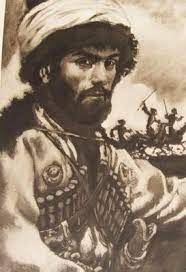
He found many “illegal” things in the Works. In particular, according to Belgard, in “Hadji Murat” “the Emperor Nicholas I is subjected to inadmissible, extremely rude and insulting to his memory”; among other things, “reviews of him as the bearer of supreme power, and of the sovereigns and queens who reigned before him” are presented in an impudent, disrespectful form.
As a result, the first edition of the story (Moscow, 1912) came out with several censorship omissions. The chapter about Nicholas I was cut more than twice: four and a half pages instead of ten. Only one sentence was left of chapter XVII: “The village which was ruined by the raid was the same village where Hadji Murat spent the night before he went out to the Russians”. In the same year of 1912 the Berlin Publishing House of I. P. Ladyzhnikov published uncensored version of “The Works”: “Hadji Murat” was published in the third volume. It should be noted, however, that both the Moscow and Berlin editions of the book were based on the same text by Boulanger, who had no access to Tolstoj’s original manuscripts. A complete edition of Hajji Murat, based on the writer’s autographs, was not published until 1950, in Volume 35 of the Complete Works of Tolstoy: it corrected mistakes of the copyists and the author’s errata, and contains a version and abstracts of the story.
